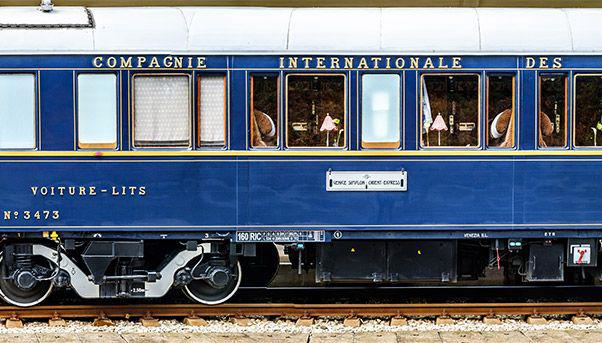
It was Agatha Christie’s pen that immortalized the Orient Express, the long-distance passenger train that made its first journey in 1883 connecting the Gare de l’Est in Paris with Constantinople, today’s Istanbul.
“Murder on the Orient Express” was released serially in 1933 by The Saturday Evening Post, and was published the following year in a single volume by Collins Crime Club, imprinting the famous train and detective Hercule Poirot on the public’s imagination for generations to come.
Since then, thousands of people have walked along Poirot’s same carriages, rested in his comfortable armchairs, and sipped tea in elegant bars that offer a diversion from the long journey — helping to transform a railway line into a collective myth, expression of comfort and luxury, a symbol of how an infrastructure can become entertainment and leisure, and in many cases even the object of desire.
Orient Express: history
The history of the train that crosses Europe to reach Asia began with its first trip on October 4, 1883. Its name, back then, was “Express d’Orient” (later transformed in 1891 into “Orient Express”) and the route departed from Paris, passing through Vienna and on to Giurgiu, Romania, where passengers crossed the Danube on a ship to take a new train to Varna, Bulgaria, and from there leave for Constantinople.
In 1885, a second route was added, running from Vienna to Belgrade and Nis, followed by a section in horse-drawn carriages to Philippopolis (now called Plovdiv, in Bulgaria) and then again by railway in the last stretch to Istanbul.
Over the years, also thanks to the line’s success, the train’s cross-continental routes multiplied. The route called Simplon Orient Express was added after World War I, a southern branch that — taking advantage of the newly-opened Simplon Tunnel – went through Lausanne in Switzerland and then stopped in Milan, Venice, and Trieste in Italy.
In the 1930s a further line was added, bringing the total to three. The first two were joined by the Arlberg Orient Express, which ran through Switzerland, but from Zurich; from there it called at the town of Innsbruck and then headed for Budapest, Bucharest and Athens. This was the era when Agatha Christie’s “Orient Express” was published, and this heyday has remained etched in the collective imagination because of its refined furnishings, its restaurant carriages known for their haute cuisine, and the comfortable and private night cars.
Thanks to these characteristics, the Orient Express became the preferred means of transport for the upper middle class and the nobility of the time, especially when the line reached London. But not all of these lines were luxurious. Despite their glamourous image, many of the routes were in fact those of a traditional train, used by thousands of travelers to cross Europe.

The evolution of the Orient Express
In the 1960s, thanks to the development of air transport, the Orient Express began to lose its appeal among travelers. In 1962 the two lines Orient Express and Arlberg Orient Express ceased service. The Simplon Orient Express remained in operation, which was replaced by a slower train called the Direct Orient Express. It made the trip twice a week from Paris to Istanbul, ending its journey in Athens.
The train remained in operation until May 19 to 22, 1977 when it made its last run to Istanbul.
In the following years, however, a shorter line remained active, which started from Paris and stopped at Bucharest and Budapest, until it was reduced in the early 2000s to just the Paris-Vienna section.
In 2009 this line was terminated, and the Orient Express, or in any case one of its heirs, looked set to disappear from the European railway maps.
The future of the Orient Express
The dream of the Orient Express lives on today thanks to a hospitality giant: Belmond Management Limited, a company that owns luxury hotels, restaurants, trains and cruise ships.
Belmond has taken over the old Simplon Orient Express line with a route that goes from London to Venice, focusing on the historical legacy by offering travelers a luxurious experience in vintage carriages with the finest furnishings.
Because of the history and the myth surrounding this infrastructure, the experience on travelling on the Orient Express — as the group’s website also explains — ceases to be a journey across space and becomes a journey through time, back into distant eras, surrounded by Art Déco atmosphere described by Agatha Christie.

